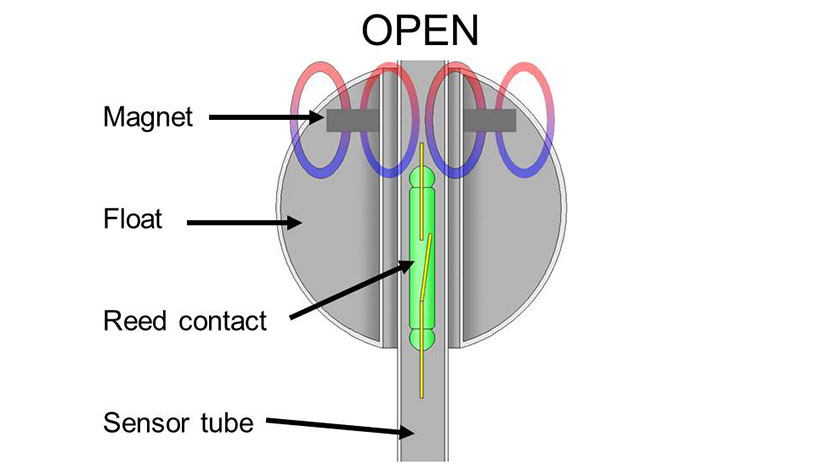
Technology developments frequently focus on overcoming the weaknesses and shortcomings of existing products. Sometimes, however, older technologies are better suited to an application than their newer, shinier counterparts.
That was the case of the skid manufacturer featured in the January 2018 issue of Flow Control. The company’s engineering team was looking for cost-effective, dependable level measurement instrumentation for various applications that, although different, worked under similar temperature and pressure ranges and with clean liquids. After careful evaluation, they found that the option best suited for their needs was the good old reed chain transmitter.
Available Technologies
For decades, reed chain switches have been applied in many industries, and became popular as a level measurement technology. They are small, simple, economical, and versatile – able to accommodate a wide range of operating temperatures, pressures, and liquids. Stacking multiple reed switches onto a circuit board transforms the function of single reed switches into a transmitter when working in concert with resistors. Thus we have the resistance chain or reed chain transmitter. Along with the benefits of reed switches mentioned above, reed chain transmitters also work well in a variety of level applications, including those with vibration. However, they are not as accurate as is sometimes needed, and they provide a stepped output.
Magnetostrictive sensors are similar to reed chain switches and were developed to provide better accuracy and a continuous output. However, magnetostrictive sensors are more expensive and are negatively affected by noise and vibration. Like reed chain switches, magnetostrictive sensors are mechanically operated. As such, high pressure and temperature can affect them negatively. What’s more, dirt and product build-up can hinder the movement of the floats.
Guided wave radar (GWR) came along and solved the problem of moving parts in level measurement instrumentation. It is highly accurate and can be used in a variety of applications where process media and conditions might affect mechanical instrumentation. No wonder GWR has become the standard choice for most sectors. Its advantages, though, come at a price. GWR transmitters are expensive. Adding to the cost – in the form of time and labor – are their setup procedure and need for individual calibration.
Why Reed Chain Switches
The skid manufacturer was looking for ways to cut down on technician time and to reduce costs while still ensuring the quality of the processes. Magnetostrictive technologies would have fit the bill, but the manufacturer’s large turbo engines produce too much noise and vibrations for such sensitive instrumentation. The solution: reed chain switches. They do not need to be set up or calibrated. They are rugged and resist vibration well. Improvements in mechanized fabrication and machine welding have led to these switches’ greater reliability and lower cost – up to 40% cheaper than GWRs. As for precision, the manufacturer said reed chain switches provide more than enough accuracy for its purposes.
Depending on the conditions of your particular applications, you may also come full circle and be better off with old-school technology.
Read more about the featured solution in this article. WIKA’s support team can also provide more information about level measurement instrumentation and assist you with solutions that are right for your needs.

